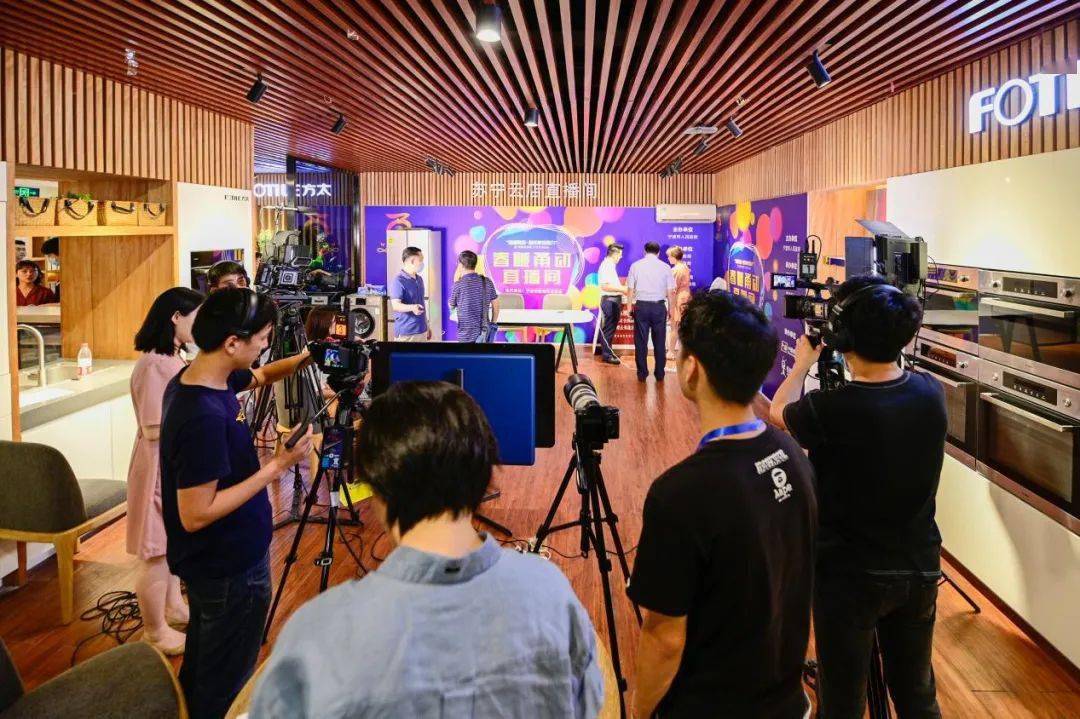In recent years, live commerce, or live-streaming e-commerce, has emerged as one of the most prominent trends in China's retail landscape. Combining real-time video interaction with online shopping, live commerce allows hosts (often influencers or celebrities) to showcase products and directly sell them to viewers during live broadcasts. This model has rapidly transformed consumer behavior and become a significant driver of China’s digital economy. In this analysis, we will explore the origins and evolution of live commerce in China, the driving forces behind its rise, its advantages and challenges, and the future of this dynamic industry.

1. The Origins and Development of Live Commerce
Live commerce in China is the result of the convergence of e-commerce platforms and social media. Early e-commerce models relied heavily on static images and product descriptions, but with the rise of short video platforms like Douyin (the Chinese version of TikTok) and Kuaishou, businesses recognized the potential of using live video to connect with consumers more directly. By 2016, major e-commerce platforms like Taobao and JD.com began integrating live-streaming features, and a new form of real-time online retailing began to take shape.
The live commerce phenomenon exploded in 2020 during the COVID-19 pandemic when lockdowns and restrictions led to a sharp decline in traditional retail activity. Live streaming became a lifeline for businesses to reach consumers, and both small businesses and major brands flocked to the format. With popular live streamers such as Li Jiaqi (known as "the Lipstick King") and Viya amassing millions of viewers during each broadcast, live commerce quickly evolved into a dominant force in China's e-commerce ecosystem.

2. Key Drivers Behind Live Commerce's Rise
-Technological Advancements and Platform Integration
The rapid growth of live commerce is closely tied to China's advanced mobile internet infrastructure and the widespread use of smartphones. High-speed 4G and 5G networks enable consumers to seamlessly watch live streams and make purchases from anywhere. E-commerce platforms like Taobao, JD.com, and Pinduoduo have integrated live-streaming features, while social media platforms like Douyin and Kuaishou have built-in shopping functionalities. Algorithms on these platforms push personalized content to users, increasing engagement and boosting conversion rates.
Furthermore, the integration of advanced payment systems such as Alipay and WeChat Pay, along with highly efficient logistics networks, ensures that viewers can complete purchases quickly and receive their products in a short time. The combination of smooth user experience, fast payments, and reliable delivery has helped fuel the boom in live commerce.
- Shifting Consumer Behavior
As China's middle class has grown, so has the demand for more engaging and interactive shopping experiences. Live commerce offers an appealing alternative to traditional online shopping by allowing consumers to see products in action, ask questions in real time, and receive immediate feedback from the host. The sense of immediacy and trust built through live interaction appeals to consumers who seek personalized recommendations and reassurances before making a purchase.

Additionally, the sense of urgency created by limited-time offers, flash sales, and discounts during live broadcasts encourages impulse buying. This form of “entertainment-driven” shopping taps into the psychological need for excitement and immediacy, differentiating it from conventional e-commerce transactions.
-Social Influence and Trust
Hosts of live commerce broadcasts, who range from influencers to celebrities, have significant social influence. Their role extends beyond simply showcasing products; they serve as trusted advisors whose recommendations carry substantial weight among their followers. This trust-based relationship between live streamers and their audiences drives higher conversion rates compared to traditional advertising.
The real-time interactivity of live commerce also fosters a sense of community and engagement. Viewers can ask questions, see products demonstrated live, and interact with other viewers, creating a more immersive and social shopping experience than browsing product pages on an e-commerce platform.

3. Advantages and Challenges of Live Commerce
Advantages
- High Efficiency and Conversion Rates: Live commerce is an incredibly efficient way to move large volumes of products in a short period. Influencers can sell thousands of items in just a few minutes by leveraging the power of real-time engagement, exclusive discounts, and personalized product demonstrations. This high-speed sales model has made it especially appealing during major online shopping events like “Singles’ Day” and “618.”
- Enhanced Consumer Experience: The interactive nature of live commerce adds a layer of entertainment and personalization to the shopping process. Hosts often create a relaxed and engaging environment, allowing viewers to feel more connected to the product. Consumers are not just passive shoppers; they are part of a lively, conversational experience.
- Broad Demographic Reach: Live commerce appeals to a wide range of demographics, from younger digital natives in urban centers to older consumers in smaller towns. With mobile-friendly platforms and diverse product offerings, live commerce has effectively penetrated different consumer segments across China.

Challenges
- False Advertising and Quality Control: As live commerce continues to grow, so do concerns about false advertising and inconsistent product quality. Some streamers have been found to exaggerate the effectiveness or quality of the products they promote, leading to consumer dissatisfaction. These practices have tarnished the credibility of the industry and highlighted the need for more stringent regulations.
- Intense Price Wars: Many live commerce sessions rely on aggressive price cuts, special discounts, and limited-time offers to attract viewers. While these strategies can drive significant sales in the short term, they also put pressure on profit margins for brands and merchants. The constant race to offer the lowest prices could erode brand value and consumer trust in the long run.
- Dependence on Key Influencers: China's live commerce market is dominated by a few top influencers, such as Li Jiaqi and Viya, who command massive audiences and generate millions of dollars in sales during each session. This concentration of power in a handful of individuals creates vulnerabilities for both brands and platforms. If these top influencers lose popularity or face controversies, it could lead to a significant disruption in the market.

4. The Future of Live Commerce in China
-Increased Regulation and Standardization
In response to growing concerns about product quality and false advertising, the Chinese government and major e-commerce platforms have started implementing stricter regulations for live commerce. These include guidelines on truthful product descriptions, refund policies, and consumer protection. As the industry matures, we can expect a more standardized and regulated environment that prioritizes transparency and accountability.
-The Rise of Brand-Owned Live Streams
While many brands rely on popular influencers to drive sales through live commerce, there is a growing trend toward brand-owned live streaming channels. Brands are increasingly recognizing the value of direct engagement with their customers, bypassing third-party influencers. This shift allows companies to maintain greater control over their messaging, build stronger customer loyalty, and create more tailored shopping experiences.

-Technological Innovation and Immersive Shopping
The future of live commerce will likely see deeper integration of technologies such as augmented reality (AR) and virtual reality (VR). These tools could offer consumers a more immersive shopping experience by allowing them to “try on” clothing or visualize products in their homes during live streams. Additionally, the use of AI-powered virtual hosts and enhanced real-time data analytics could further personalize the shopping experience, driving higher engagement and sales.
5. Conclusion
China’s live commerce phenomenon showcases the powerful intersection of technology, social influence, and consumer behavior. It has revolutionized the way people shop, creating a highly interactive, social, and immersive retail experience. However, despite its tremendous growth and success, the industry also faces significant challenges, including quality control issues, regulatory concerns, and reliance on top influencers.
As live commerce continues to evolve, it will likely play an even larger role in China’s digital economy. With further advancements in technology, more brand involvement, and improved regulations, live commerce is poised to remain a dynamic and transformative force in the global e-commerce landscape.



